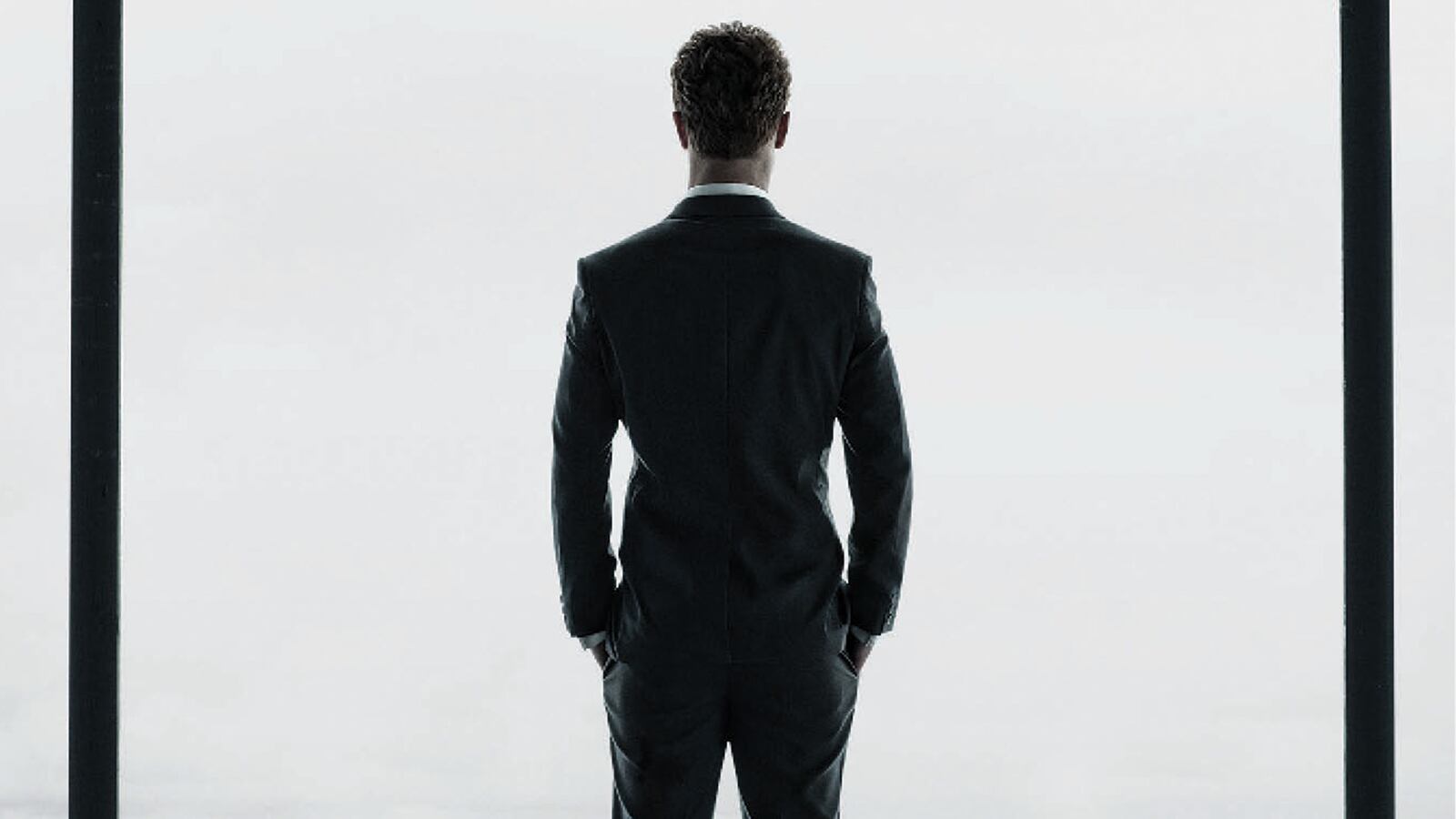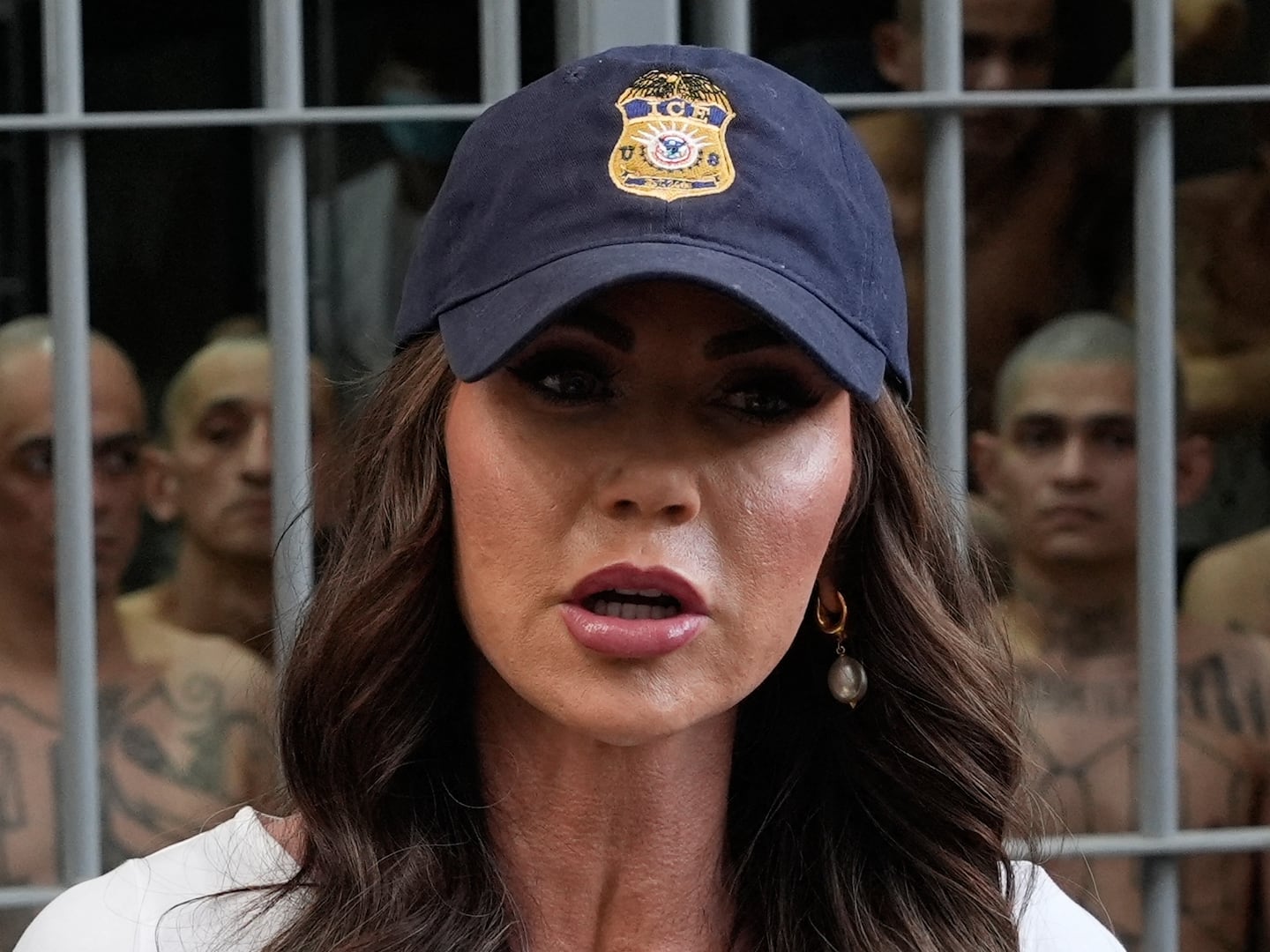During last week’s splashy Fifty Shades of Grey promotional tour, director Sam Taylor-Johnson described sex in the film as “very choreographed.” It was a red flag: sex should never be choreographed, except perhaps in musical theater and interpretive dance. More warning signs came from lead actress Dakota Johnson, who said the sex scenes were visually “beautiful,” and “like a dance.”
Cut to Christian Grey’s bedroom, where the antihero of E.L. James’ bestselling BDSM-lite novel, a 27-year-old billionaire and sexual dominant played by actor Jamie Dornan, deflowers the clumsy and hopelessly romantic Anastasia Steele (Johnson).
The film’s first sex scene shows a lot of earnest lip-biting, heavy-breathing, and body-undulating from Anastasia, while Christian’s head hovers awkwardly and elusively around her pelvis.
Much attention is given to the curves of Anastasia’s naked body—swollen breasts, arched back, curled toes, quivering abdomen—emphasizing the male gaze. But nowhere does the scene stray from these hackneyed conventions, which, were it not for one fleeting glimpse of her pubic hair, could pass in a PG-13 film.
The writhing and sighing drags on uncomfortably through a decidedly G-rated money shot, when the camera sweeps up to a skylight above Christian’s bed, where we see a reflection of our billionaire sadist’s bum flexing with every mechanical thrust.
Two things came to mind: first, that the only other time sex has looked so “choreographed” in a movie was when marionettes made love in the satirical comedy, Team America. Second, that watching Christian and Anastasia’s first time play out on the silver screen was like watching two people you don’t care about have terrible sex.
That would make more sense in a sex scene that’s supposed to be difficult to watch. But as fans of the book know well, Anastasia’s first time is intergalactic—nothing like lackluster sex most women associate with losing their virginity. Christian is also fully in control and rather chatty. Indeed, the unfiltered dirty talk is the only thing that makes reading E.L. James’s euphemism-heavy smut worthwhile.
But on camera, Dornan has never looked so neutered, so utterly lacking sex appeal, so unenthusiastic. And we cannot pin all blame on the actor, who has excelled at this stuff in almost every other role he’s ever played.
Things don’t improve much in Christian’s “playroom,” where Anastasia, the wary but wanting submissive, gets acquainted with his state-of-the-art equipment, riding crop, belt, whip, and other toys.
There are a few fleeting moments that could pass as sexy, like when Dornan exerts himself during one particularly unrelenting spanking, or when flesh is seen from an angle that pushes the envelope ever so slightly.
But the film has set the bar shockingly low. It leaves the audience feeling shortchanged, after sitting through a film that is otherwise fiercely loyal to the original material. In short, the movie that promised to be the most titillating Hollywood motion picture ever made—the apex of a cultural phenomenon that thrust BDSM into the mainstream—was, basically, really bad in bed.
***
Fifty Shades of Grey is perhaps the only movie about a woman’s romantic and sexual fantasies which could fail at being sexy and still manage to be a phenomenal success.
That so many people bought tickets in advance—it has become the fastest-selling R-rated movie in Fandango’s history—is proof of the Fifty Shades franchise’s prevailing cultural influence.
It’s no wonder that director Sam Taylor-Johnson has signed on to make the second and third installments of the trilogy. No amount of lackluster reviews or collective groans of disappointment will deter people from seeing it. Fifty Shades is, quite simply, critic-proof. It will endure, and throw off, any scorn thrown at it.
When E.L. James rolled out the Fifty Shades trilogy in 2011, her smutty fan-fiction quickly became a literary phenomenon.
The series resuscitated the barely breathing books industry, selling 20 million copies within months of being published in March, 2012. (To date, more than 100 million copies have sold.) Random House raked in so much cash from sales in 2012 that all employees, from VPs to janitors, were given a $5,000 bonus at the end of the year.
Publishing also profited from countless Fifty Shades spin-offs and genre crossovers, from memoirs to parodies. Fringe fantasies suddenly entered the mainstream, exposed on Amazon’s bestseller charts.
For example, ‘monster porn’ made a name for itself in the increasingly lucrative industry of self-published smut with the Cum For Bigfoot, a 12-book series by Virginia Wade, a pseudonym. At one point, Wade was earning $30,000 a month from Bigfoot sales through Amazon’s Kindle Direct Publishing.
In 2013, the books also spawned an off-Broadway play and a gender-studies course: Fifty Shades permeated every niche of culture. There were thousands of think pieces, including one on this website comparing the book to James Joyce’s Ulysses.
In a 2012 story in Newsweek, Katie Roiphe attributed the book’s success to the success of feminism, arguing that women may want to surrender some of the power they’ve gained in chipping away at the glass ceiling.
There have been two soundtracks, one released in 2012 after the books and one with the movie, plus endless merchandising tie-ins that far surpassed the predictable lingerie and sex toys—everything from Fifty Shades-themed vacation packages to wine and baby onesies. With its Valentine’s Day release, the movie has given businesses an opportunity to cash in on the Fifty Shades effect all over again.
***
And yet, despite all this, the thing we know it best for—its sex—is absurdly underwhelming and silly. At least the movie cuts much of the book’s most groan-inducing prose and Anastasia’s internal monologue, making her character more likeable.
Johnson’s nuanced, effortful performance helps. The actress surrenders fully to her character but also brings Anastasia’s fumbling innocence to life in a way that is endearing and even comical. Her efforts are not totally lost on the film’s bad sex: she deserves credit for some of those fleeting sexy moments.
If anything ruined the sex in the book, it was Anastasia and E.L. James, who punctuated long descriptions of explicit sex with Anastasia’s ridiculous and juvenile exclamations (“Holy Cow!” “Holy Moses!’).
But between the book and the film, the bigger problem is Christian Grey. He is a blurry fantasy of the dominant male ideal, a thinly sketched derivative of Mr. Rochester and other brooding heroes in the Victorian literature that Anastasia studied in college.
The book allowed female readers to round out his character with their own versions of this ideal. But this doesn’t translate on screen, where little distinguishes him from the hunky star of a daytime soap opera besides his “singular tastes” and varied collection of spanking paddles.
Christian is also unusually polite and sensitive for a sadist, constantly addressing his submissive by her full name, checking in on how she feels, serving her fine wine and making sure she’s well-fed. He even rubs her down with baby oil after a spanking.
These are all part of E.L. James’ unsubtle efforts to make him fit the classic male romantic hero ideal: all-commanding, but all caring. The heroine fears and desires him. He is both mysterious and nurturing, and—hoary stereotypes intact—at the end of the day, she just wants to be saved.
These qualities are underdeveloped and poorly conveyed, but they pass in print, in part because Christian doesn’t hold back in bed. Dornan doesn’t add enough to them in the movie to make Christian a three-dimensional character. He plays his character straight, without being able to demonstrate any of the sexual prowess we know from the book.
It doesn’t help that most of the dialogue in the movie is lifted, unaltered, from the book. You can’t help but squirm in your seat and laugh nervously when Dornan delivers one of the book’s most famously cringey lines without any irony: “Because I’m fifty shades of fucked up, Anastasia.”
He’s also completely mute during sex, a directional decision which makes little sense except that producers didn’t want anything too pornographic in the film, least of all from a man who is already wielding paddles and tassel whips.
It’s worth noting that the tassel-whip scene—ridiculous in the book—is filmed in slow motion, with 16th century composer Thomas Tallis’ Spem in Alium playing in the background. Dornan looks like a complete ninny, wielding the tassel-whip limply and delicately as if it’s an accoutrement to a piece of expressive dance.
After that visual debacle, it’s incredibly satisfying to see him sweat while spanking Anastasia at the end of the film.
***
The film could have succeeded had it shown raw sexuality on camera—especially raw female sexuality— as opposed to “choreographed” sex, where the woman is an instrument. But it’s difficult to do sex brilliantly in a film that’s a love story, and impossible to do in a maudlin, made-for-teens love story.
The films that handle sex brilliantly, if sensationally, tend to be more realistic in their portrayal of passion, like Blue is the Warmest Color and Y Tu Mamá También. But in the multiplex-friendly Fifty Shades we could not have expected to see anything like what we saw in other movies where bondage is a main theme (9½ Weeks, Last Tango in Paris).
These films are too dark, too transgressive, and Fifty Shades was always going to be a commercial film. But if sex in the film had been better—more real or more intense—then it might have given the phenomenon more cultural cachet. It could have actually challenged our perceptions of BDSM and power dynamics in relationships. But BDSM is served badly by Fifty Shades, as are more mundane expressions of sexual desire.
***
Of course, Fifty Shades is what it is: a mainstream runaway train of a success, with the misleading promise of dabbling around the extremes of sexual fantasy and roleplay. The producers would have likely sacrificed commercial success to push the envelope in this film. Had they done so, the effect would have been too polarizing. (Sex that pushes the envelope in film is always polarizing).
It’s clear that, like the books, the movie isn’t meant to be taken seriously. But as a result, it’s just witless camp that verges on self-parody—like a really bad porno without any sex.
For all its supposed titillation and challenging of sexual mores, Fifty Shades couldn't feel more conservative and stilted. Teenage chastity activists could use it persuasively as propaganda. The film that should have turned us on the most this year manages to extinguish sexual desire. It is uncomfortable in its own, superficially sexy skin.
Why Fifty Shades appeals to so many is simpler than a thousand think pieces would have us believe. It’s a safe walk on the dark side; the faintest brush of a tassel-whip, then home in time for tea.






